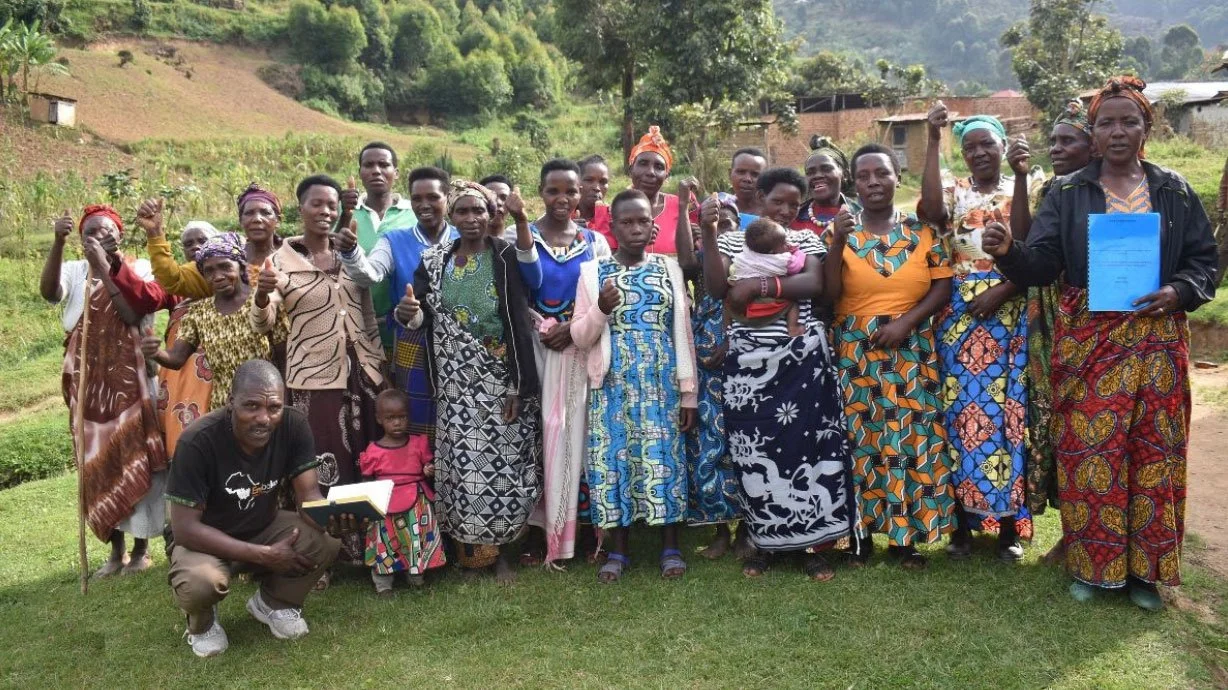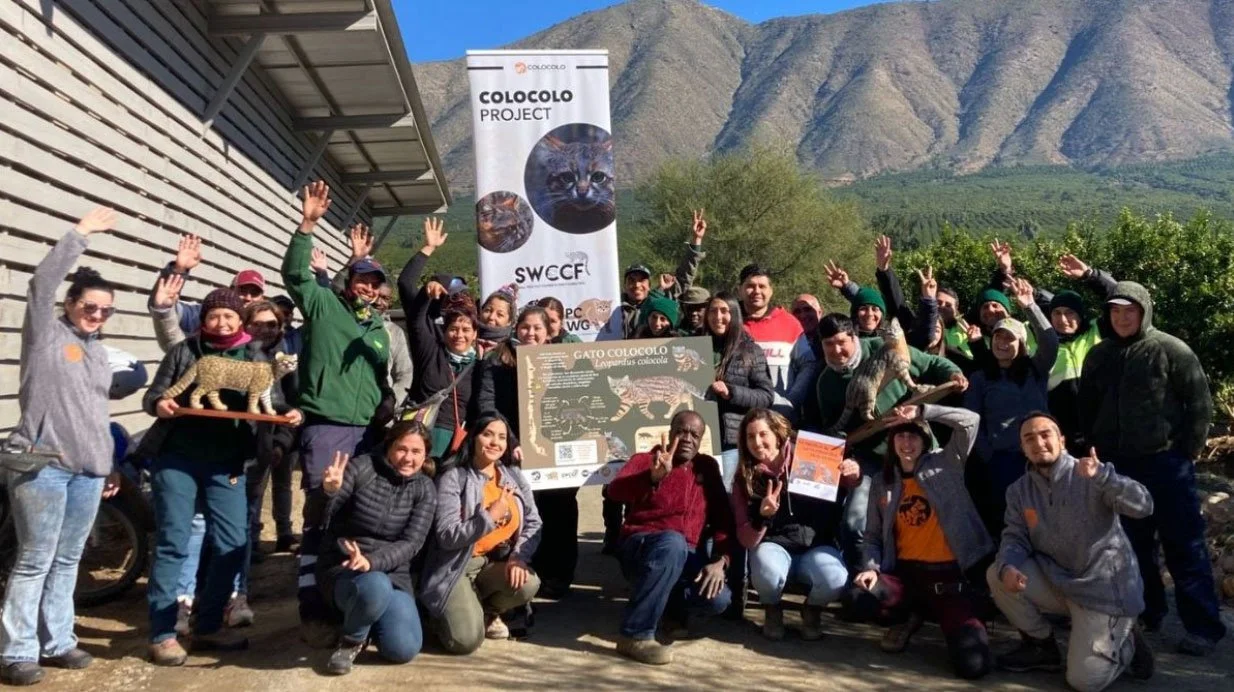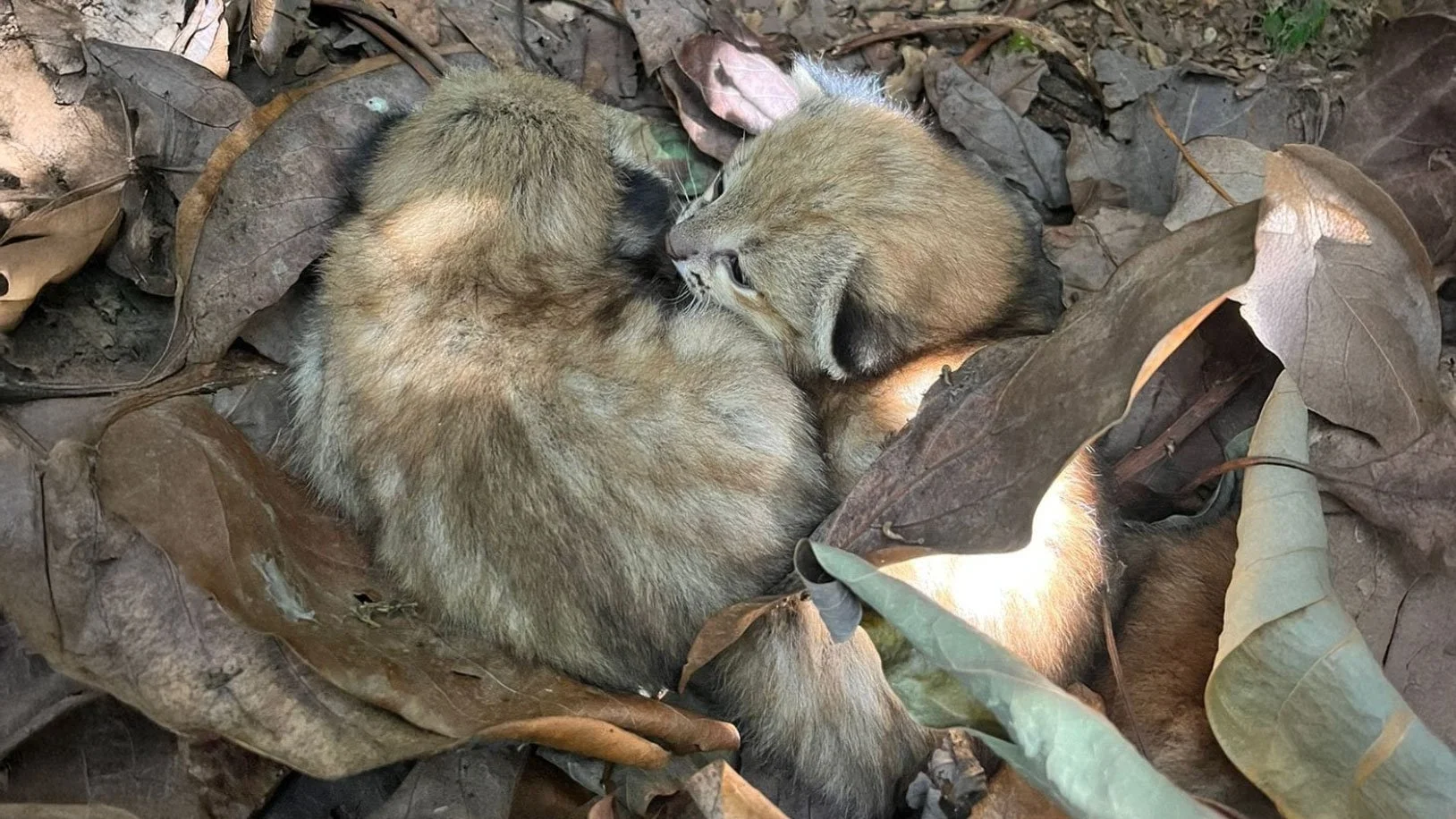SWCCF News 2025 09
Traffic signs: Much more than meets the eye
Jim Sanderson
Everywhere we work, we install traffic signs. We have traffic signs in Sri Lanka depicting the Fishing cat, in Mongolia depicting the Manul, in India featuring the Rusty-Spotted cat, and Mexico with several species including the Jaguar. The above traffic signs in Chile depict all seven wild cat species found in Chile, from the diminutive Guigna to the Puma.
Skeptics argue that traffic signs don't really slow traffic and so are a waste of money. Maybe so, but this belief is at best shallow because spin-off impacts are ignored. Does anyone really believe we spend time and money installing traffic signs solely to slow traffic and prevent road-kills? Traffic signs are rarely a waste of precious conservation funding. In fact, for calling attention to our efforts, traffic signs are an effective, relatively small, investment. Nothing is more effective than traffic signs to get the attention of federal, state, and local government transportation officials whose doors are often closed. Moreover, judging by the number of selfies being posted across social media platforms, our custom traffic signs are getting motorist's attention.
Traffic signs are also effective in spreading our message in others ways. Often government agencies imitate our efforts and install signs at their own expense. Not surprisingly, other non-government organizations imitate our efforts and install signs. We welcome copy-cats! We don't care who spreads the message so long as the message gets spread.
In the near future, we will have a global network of traffic signs depicting every extant small wild cat species. Be the first to take a selfie at each species. I don't think you can beat me—I know where the only Saber-toothed cat traffic sign stands.
Traffic signs, spreading the word, and creating partnerships
Melanie Kaiser and Patricio Muñoz Peña, Chile, Fundación Con Garra
In April 2023, Fundación Con Garra launched the #LentoPorLaFauna campaign to focus attention on a ubiquitous, but hardly visualized threat: Wildlife-vehicle collisions that kill Chile’s native wild cats. With our campaign, we pursued several goals simultaneously: To initiate dialogue with public and private stakeholders about the need for long-term solutions, and to take immediate action on the ground. Our goal is to install road signs across Chile, each sign highlighting one of the seven wild cat species living in Chile.
Thanks to generous support from our financial partners, the campaign took off quickly. In January 2024, #LentoPorLaFauna obtained official backing from the Ministry of Transport and Telecommunications, the National Traffic Safety Commission, the Agricultural and Livestock Service, and the National Forestry Corporation. With this official validation, the campaign spread rapidly, reaching drivers across the entire country. Today, more than 150 official signs stand along 5,000 kilometers of highways, from the altiplano in the far north to Torres del Paine and the mythical Milodón Cave in Patagonia, once a retreat of the Saber-toothed cat.
Recently, we achieved another meaningful goal. For the first time, all seven wild cat species are now represented on road signs, with at least four signs dedicated to each species. This milestone ensures visibility for every species, from the small (but not less fierce) Güiña to our endemic Colocolo; Garleppi roaming the far north, and the Pajeros in the Patagonian steppe; our elusive Geoffroy's cat, the Andean cat and the Puma.
But the campaign is so much more than road signs. Police officers in different regions regularly carry out speed controls under the campaign’s name, handing out information and inviting drivers to commit by placing campaign stickers on their cars. Mining and tourism companies are offering road safety training for their workers, while schools are running environmental education workshops focused on this issue. The campaign has grown so much that many of these activities take place independently—we often learn about them from the media. #LentoPorLaFauna is no longer just our campaign; it now belongs to thousands of Chileans. And we know for sure there are people in Uruguay, Colombia, and Argentina, too, who identify with the campaign and multiply the message. Other NGOs are following our lead, becoming imitadoras, copy-cats, spreading our message.
Through hard work and dedication, Fundación Con Garra has become a leading voice on the issue of wildlife-vehicle collisions, and today we are regularly invited to participate in decision-making processes to help mitigate this threat. The campaign continues to grow–and so do the obstacles ahead. Enabled by our financial partners, we are ready to tackle these challenges.
None of our past achievements would have been possible without the support of our donors. Likewise, future progress depends on your ongoing generosity. With your support, we can ensure that Chile’s wild cats do not follow the path of the Saber-toothed cat but find a secure way to cross roads into a brighter future.
Fundacion Con Garra
Community-Led Conservation for the African Golden Cat in Echuya Forest
Emmanuel Akampurira, Uganda, Embaka
Embaka is leading a community-based conservation project to protect the African golden cat (AGC) in the Echuya Forest Reserve in southwestern Uganda for over four years. Our efforts have been led by the community members themselves, who have established a constitution, guidelines, and rules to govern the community-based initiative. Embaka provides advisory services and technical support whenever necessary. Over the past four years, the project expanded from an initial group of 40 ex-poachers to 450 individuals, including ex-poachers, non-ex-poachers, indigenous Batwa people, women, and youth. The community project distributed 164 livestock to 164 individuals (including ex-poachers, non-ex-poachers, indigenous Batwa, and women) and provided seed money to women to form savings and loan groups, benefiting five women and two groups of men. These activities improved the livelihoods and incomes of ex-poachers and other households near the Echuya Forest, leading to a reduction in poaching and increased awareness of the threats to the AGC.
While this project appears promising in theory and is positively received by the communities, two persistent issues arise: impact and sustainability. These concerns threaten community-based conservation not just in our Echuya Forest project but in countless other communities worldwide., Stakeholders, including communities, researchers, governments, and donors, frequently question the sustainability of such initiatives when funding runs out.
A few months ago, while engaging with the communities we support, we came across an inspiring case that illustrates how impactful community projects can be sustained organically and seamlessly. During a visit to one of our partner communities, we met a local leader from another community about an hour’s drive away. We learned that his community had begun to replicate the very projects and activities that Embaka implements in its working areas. This revelation piqued our interest, and we were eager to learn more.
The leader explained that after hearing about the Embaka projects, they recognized that Embaka focuses on initiatives that uplift communities while conserving the forest. Consequently, they established a community group in February 2024. This group meets monthly, with each member contributing approximately $5. Once the group’s funds accumulate to around $150-$200, they purchase three to four livestock animals, typically goats or sheep. The group originally started with 20 members and has now grown to 35. A raffle-based system is used to determine which member will receive the livestock. Membership is open to individuals involved in conservation and awareness activities aimed at protecting the Echuya Forest Reserve and the African Golden Cat. Remarkably, all of this has been achieved without support or guidance from Embaka or any other organisation. This case clearly exemplifies how communities build sustainable, self-owned conservation projects without relying on large funding or complex frameworks. It begins with community members recognizing the value of these initiatives and taking complete ownership of the project, from conception to implementation.
At Embaka, we have faced challenges, but now, more than ever, we are seeing the positive outcomes of our collaboration with the communities. This further reinforces our commitment to conserving the African Golden Cat and improving the livelihoods of the communities that coexist with wildlife.
We extend our heartfelt gratitude to the communities we work with, the Mohamed Bin Zayed Species Conservation Fund, and the Small Wild Cat Conservation Fund for their generous support.
African Golden Cat Conservation Alliance
Colocolo Conservation On Private Lands
Carlos Castro, Chile, The Colocolo Conservation Project
Chile is globally known for its Patagonia, vast stretches of land where Puma populations grow year after year, and where successful programs have helped many species return to their former abundance. This has been possible thanks to the fact that nearly 20% of Chile’s national territory is protected as Wild Areas, whether in the form of reserves or parks (public or private).
However, of that 20%, only about 4% is located in central Chile. This means that the country’s main biodiversity hotspot — the Chilean Mediterranean forest — is virtually unrepresented in the protected area system. Even worse, these fertile lands are now mostly dedicated to agriculture and human settlements. It is precisely in these undervalued and unprotected territories where we are working — because this is where the Colocolo mainly lives.
In this very context, among avocado trees on land owned by the agricultural company Grupo Jorge Schmidt, a female Colocolo chose to give birth to her kittens (picture below). Why did she pick that spot? Most likely due to the lack of available natural habitat. Workers on the farm spotted three kittens hiding among the avocado leaves, and upon realizing they were colocolos, they contacted the Colocolo Conservation Project (CCP).
Our work started there. Our first step was that the mother and her kittens were given the space and privacy they needed. But the story didn’t end there. In collaboration with the farm, we held an educational talk about small wild cats and the conservation challenges they face. We also installed an informative sign explaining what to do if someone encounters a wild cat, how to act if it’s injured, and which nearby rescue centers to contact.
In addition, we began a monitoring program using trail camera to detect small wild cats on the property. In the hectares the company has set aside for conservation, native tree planting will begin. And of course, this entire effort will have the ongoing support of CCP and SWCCF, because it is precisely in these places — where the forest is disappearing and biodiversity is holding on — where conservation programs are needed most.
We are deeply grateful to the farm workers for their willingness to protect the Colocolo, and to the company’s environmental officer for reaching out to us. We are confident that, by working together, we can truly make a difference.
Colocolo kittens hidden among leaves





